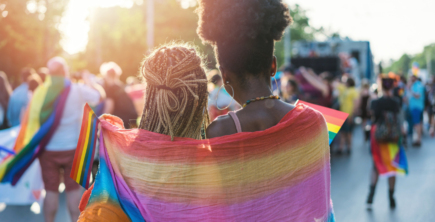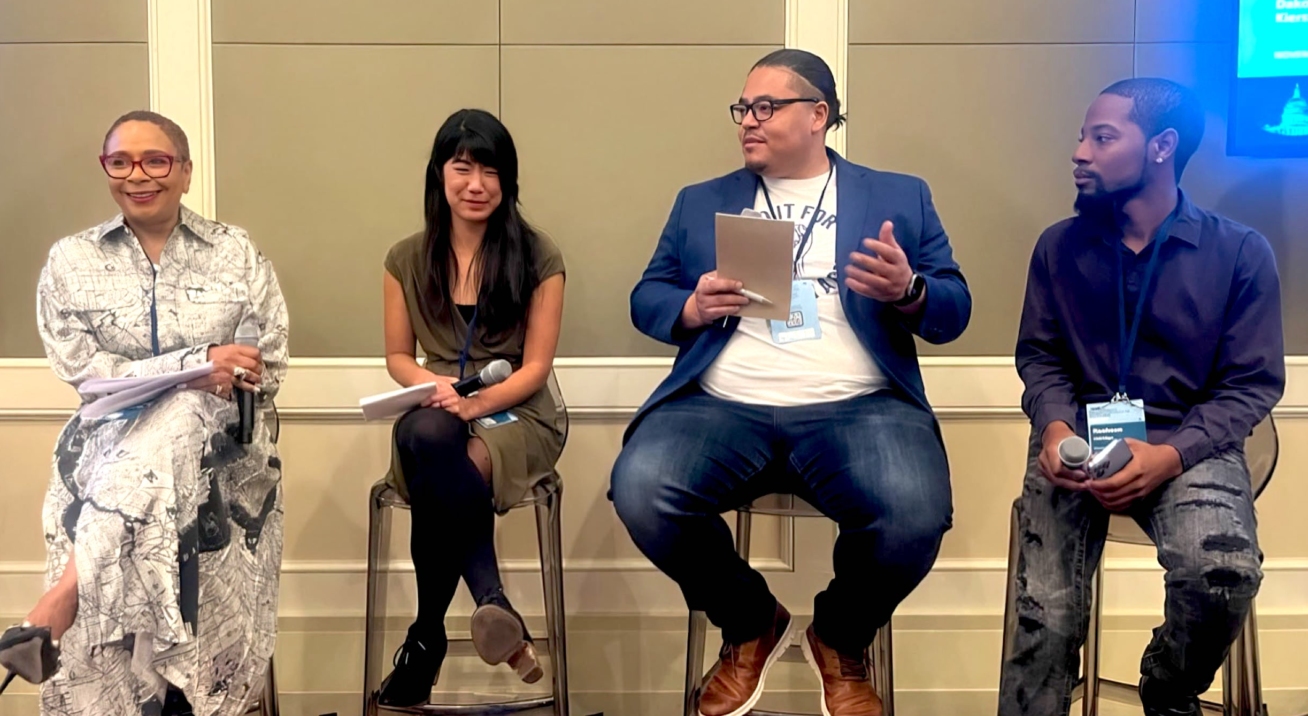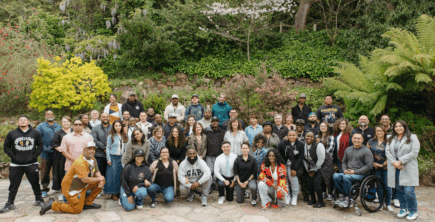
LGBT

By next year’s presidential election, 41 million members of Gen Z will be eligible to vote. We underinvest in young people at our peril. Underinvesting in voter turnout, education, and persuasion, and only investing in youth organizations during election cycles, is insufficient for building durable power. At Tides, we are committed to long-term organizing for young people and by young people to build a stronger democracy for generations to come. That’s why the Tides Healthy Democracy Fund has prioritized youth organizing and turnout and has partnered with leading youth organizations, such as the Alliance for Youth Organizing, to inform our grantmaking.
To better understand what it will take to shift power to young people and strengthen our democracy for future generations, the Tides Healthy Democracy Fund hosted a session at the Democracy Alliance Fall Conference in Washington, D.C. this November. I had the privilege of discussing these important issues with Alliance for Youth Organizing’s Executive Director Dakota Hall, Forward Montana’s Executive Director Kiersten Iwai, and St. Louis Alderman and former Ferguson Commission member Rasheen Aldridge. We were joined by over 50 donors and movement leaders from across the country.
Here are three major takeaways from our conversation:
1. Young people are not apathetic.
Youth turnout and organizing has been a bright spot since 2018. In 2018, young people turned out at record rates – 28 percent of young people voted, and they largely sustained this high turnout in the 2022 midterm elections! In 2020, 50 percent of young people, ages 18-29, voted in the presidential election, a remarkable 11-point increase from 2016 (39%)! These trends continued in 2023: young people in Ohio, Pennsylvania, and Wisconsin turned out in droves when abortion access was at stake.
I asked our panel about how we can ensure that young people turn out again in 2024. Rasheen, the youngest city councilor in St. Louis, shared with us that candidates need to connect to young people by talking about the issues that matter most to them, such as student debt, criminal justice, and the environment, and in a way that moves them to action.
Kiersten added that, “One of the tools we can use is relying on community connection. Our work is successful because we’re peer to peer. The world feels so heavy, and it can feel isolating living in Montana. When you feel connected to your neighbors, you’re inspired to take action.”
Building on Kiersten’s point, Dakota reminded us that turnout is not the only factor and that short-term mobilization is insufficient. Although mobilizing is important, organizing builds long-term power. Thousands of young people will start their organizing careers on campaigns next year, but we need to train them and build up a deep organizing culture.
2. The world looks different from Gen Z’s perspective.
Members of Gen Z are more racially and ethnically diverse than any previous generation. They are digital natives who have little memory of the world before smartphones. Kiersten reminded us that an 18-year-old in 2024 was two years old when President Obama was elected.
Gen Z has faced constant crises: COVID-19 disrupted in-person learning in high school and college…, they practiced active shooter drills in an era of tragic school shootings…, they have witnessed countless climate catastrophes, etc. As a result, their trust in government is low. Only 10 percent of young people between the ages of 18 and 26 trust Congress, 13% trust the presidency, and 17% trust the Supreme Court.
Political parties don’t always have a strong way of connecting with this reality for Gen Z. In the absence of political parties that speak to young voters, organizations like Forward Montana, an affiliate of the Alliance for Youth Organizing, fill an important gap to provide a political and civic home. This is critical for young people who the political parties often miss, including young people living in rural areas, community college and tribal college students, and young people who do not go to college.
In a world that is rapidly changing and with political parties that don’t cater to them, young people should not wait and should begin running for office, like Rasheen. As Dakota emphasized, “This isn’t just about 2024, this is about 2034 and 2044. This country is ours and it’s about seizing that moment.” Focusing on local races, such as school board elections, can be a meaningful platform for building power.
When you feel connected to your neighbors, you’re inspired to take action.
Kiersten Iwai, Executive Director, Forward Montana
3. Young people’s political preferences are mixed.
The week before the Democracy Alliance conference, the New York Times/Sienna poll showed that 47% of people ages 18-29 in six battleground states favored President Biden, while 46% favored former President Trump. Just days later, exit polls show that 85 percent of young people voted for Issue 1 in Ohio to enshrine abortion access in the state constitution on November 7.
Dakota, Rasheen, and Kiersten all shared that young people are concerned about economic opportunity. I resonated with Dakota’s question, “How will young people have a shot at the American dream? What is the New Deal for young people?” Whoever speaks boldly about abortion, minimum wage, and climate change will have a better chance at winning over young people in the 2024 election.
Kiersten shared that the New York Times poll told us something we’ve all known for a while, which is that you can’t take the youth vote for granted. I agree!!! We cannot take young people for granted in the 2024 elections, and we cannot underestimate their power.
With generous support from our donors, the Tides Healthy Democracy Fund is prioritizing grantmaking that furthers youth turnout in 2024 and year-round organizing. We hope that you will partner with us in the coming year to shift power to Gen Z and strengthen democracy for future generations.

LGBT

Corporate Partners

Philanthropy

Read the stories and hear the voices of social change leaders fighting for justice.